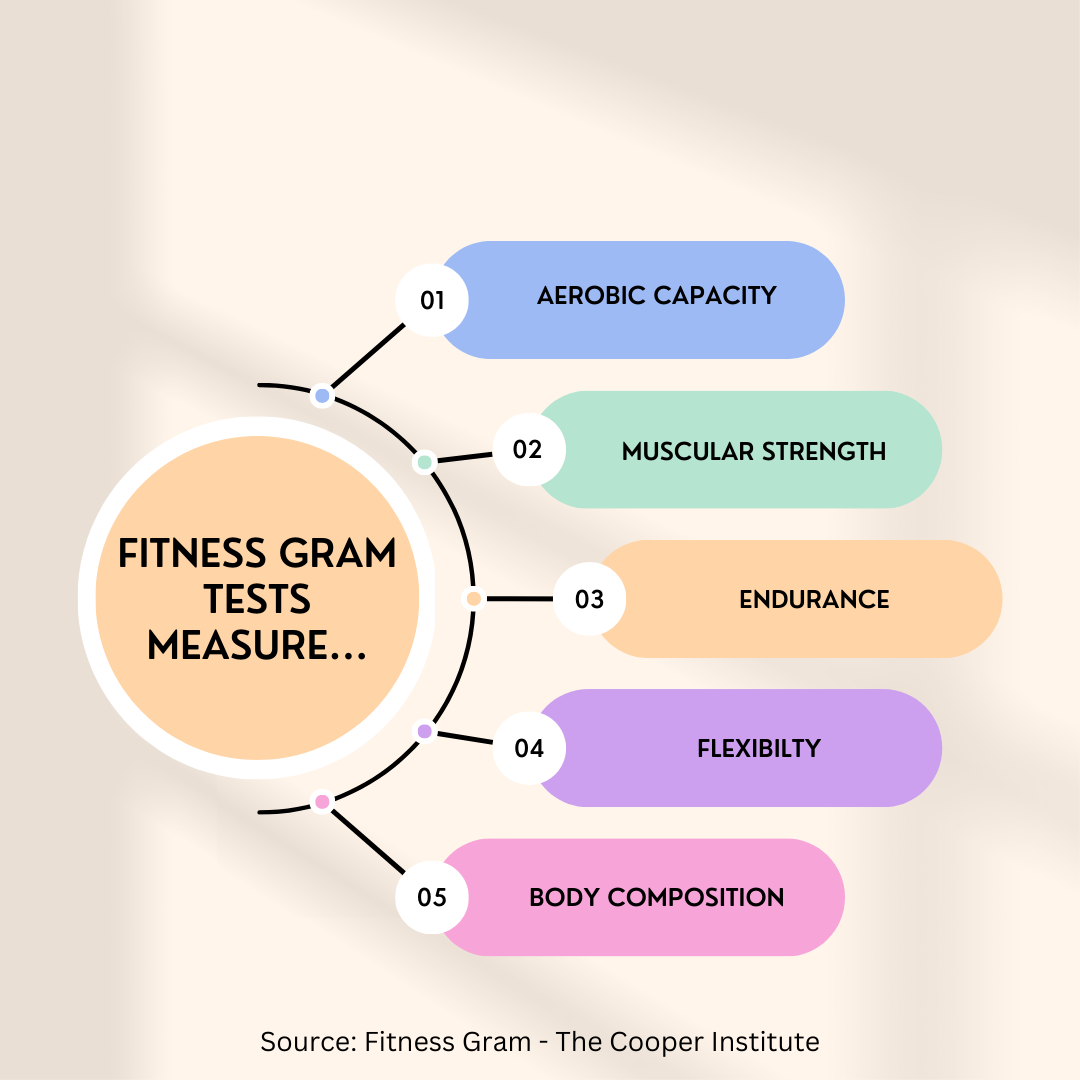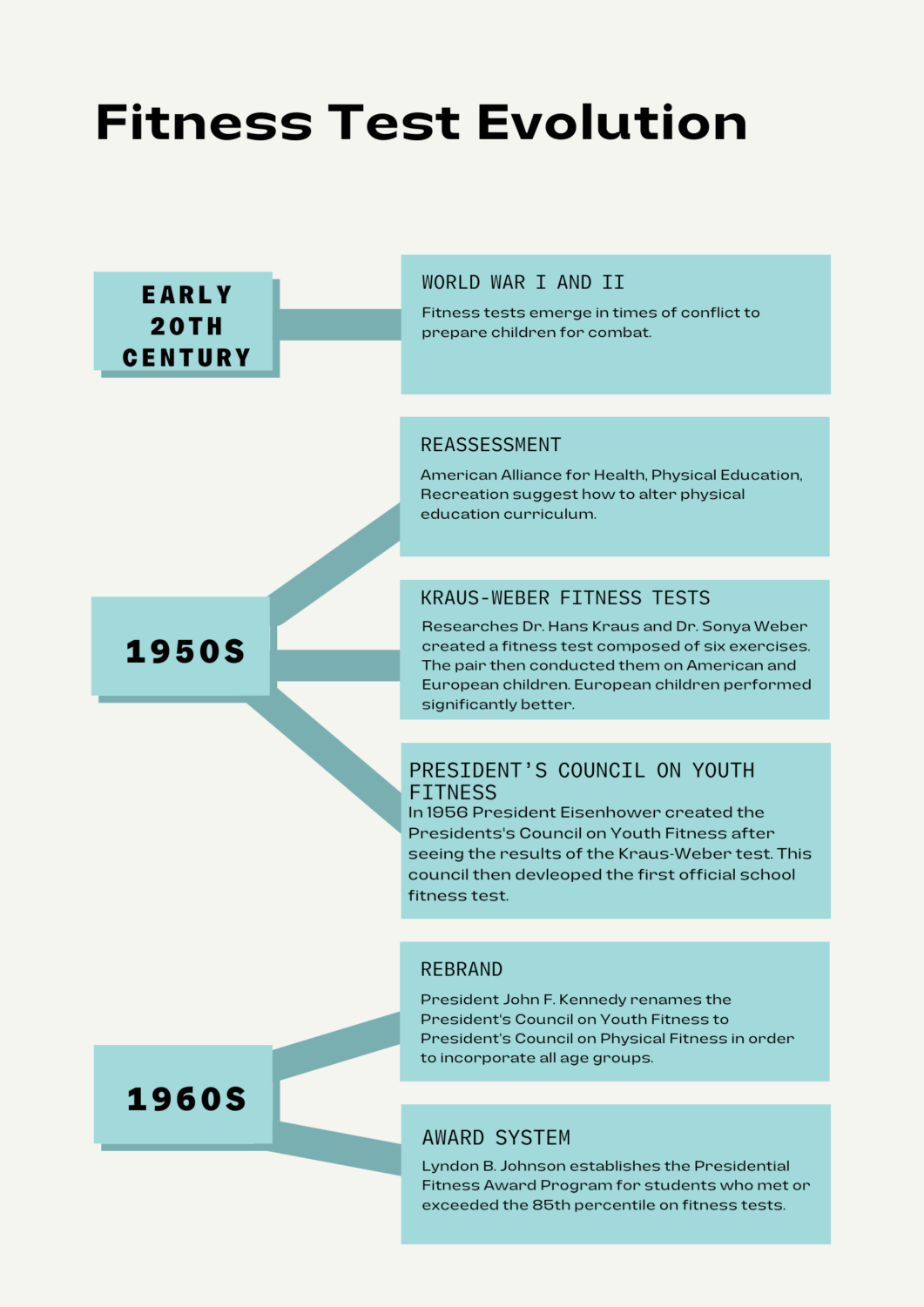From Combat to competition: The transformation of American school fitness test
May 2, 2023
“Down, up, down, up, down, up…”
Roger Francisco, the person behind the voice that has boomed across thousands of gymnasiums, has completed various voice recordings for a series of fitness tests, named the FitnessGram, created by The Cooper Institute.
According to The Cooper Institute, the FitnessGram is “the most widely used physical fitness assessment in the country, reaching millions of kids nationwide in tens of thousands of schools.”
The FitnessGram is just one fitness program in a long line of predecessors that date back to the early twentieth century.
According to the book “Fitness Measures and Health Outcomes in Youth,” during the twentieth century, school fitness tests would emerge and gain traction in times of conflict or war.
World War l was the first major historical event that helped fitness tests gain traction. The same happened during World War ll.
According to the U.S. Senate, in the 1950s the American government reassessed the physical education curriculum, along with a number of other subjects. Their main concern was how American children were keeping up with the children of the world, especially Soviet children.
A committee of the American Alliance for Health, Physical Education, Recreation (AAHPER) made suggestions for public schools to remodel their gym classes. Instead of focusing on combat readiness with activities such as obstacle courses and boxing, it was recommended that recreation activities, such as sports and outdoor activities, should be the focus instead.
Fitness tests were still administered, they just looked a bit different.
One of the biggest developments that came to American gym classes is thanks to the Kraus-Weber test.
According to Vox, in the 1950s Dr.Hans Kraus and Dr. Sonya Weber set out to research lower back pain. The pair’s research led to the creation of the “Minimum Muscular Fitness Test” which would later be named the “Kraus-Weber Fitness Test.” The test consisted of just six exercises.

In one of their experiments Kraus and Weber conducted their test on 4000 children on the east coast. 58 percent of children between the ages of six and 16 failed the test. Such
a high percentage of failures sent doctors into a frenzy, and they were quick to question if the findings were dependent on location.
The pair of researchers then took the experiment to Europe. They tested3000 rural, urban, and suburban children in Italy Switzerland, and Austria. They found that on average
only 8 percent of European children failed the test.
Kraus and Weber came to the conclusion that due to American lifestyle the youth of the country was ill-equipped to perform well on their test. Things such as the television, school buses and more had made them too comfortable.
The findings of the test alarmed American media. Parents, school administrators, and government officials alike all shared worry.
Findings of the study eventually reached President Dwight Eisenhower in 1955. Moved by the results, the president called together various sports and fitness authorities for a meeting. There he appointed Vice President Richard Nixon as the chair of a presidential committee that would be dedicated to developing a national fitness program.
In July 1956, the President’s Council on Youth Fitness was created by Eisenhower. Soon after, the Youth Fitness Project, which was responsible for conducting a study on the fitness of children across America, was created by AAPHER.
The President’s Council on Youth Fitness adopted a test from a California program. The basic test consisted of pull-ups, sit-ups, shuttle runs, standing broad jumps, a 50-yard dash, and a softball throw. The council expanded on the test by adding a 600-yard walk-run, and multiple aquatic tests, after consulting with the American Red Cross. These aquatic tests, however, were not widely implemented because of the school’s lack of access to pools. AAHPER published these eight items as the official youth fitness test in 1958.
According to the JFK Library, youth fitness tests entered a new era when John F. Kennedy took office. Before even becoming president, Kennedy wrote an article titled “The Soft American,” which advocated for youth fitness. Kennedy’s writing fed into Cold War paranoia and raised concern over individuals who were neglecting their bodies and becoming “soft.”
According to health.gov, while in office Kennedy changed the name of the President’s Council on Youth Fitness to President’s Council on Physical Fitness in order to incorporate all age groups.
Following Kennedy, the President’s Council on Physical Fitness established the Presidential Fitness Award Program under Lyndon B Johnson. Students who met or exceeded the 85th percentile on all seven test items were to receive special recognition.
The Presidential Fitness Test underwent modification in the 70s and 80s according to the text “Fitness Measures and Health Outcomes in Youth.” The softball throw was removed, and the sit-ups were modified. The award program also expanded under the Carter and Reagan administrations to include sports.
Through Bill Clinton’s presidency, emphasis on the highest performing students was lowered according to health.gov. Clinton established programs that included all children, not just those at the top of their class. A prime example was the Presidential Active Lifestyle Award. This program had the goal of getting children to be active every day. The award placed emphasis on the regular practice of fitness rather than one extraordinary performance.
It was under the Obama administration that the Presidential Fitness Test was finally retired. A new program titled the Presidential Youth Fitness Program was launched on September 10, 2012. The new program got rid of the award system altogether. It instead gave students personal goals and assessments with structure on how to reach their goals.
It appears that fitness tests will always be changing. Even here at Omaha North, a school partnered with FitnessGram, tests have been modified.
Students in physical education (PE) classes are given these tests three times a year; the beginning of the school year, the start of the second semester, and at the end of the school year.
PE teacher, Marquita Bowden, says that participation and score improvement are taken into consideration when grading students, two elements that are not administered by the FitnessGram program.
Bowden has also made her own fitness tests for her Lifetime Wellness class. She calls them fitness challenges instead of tests and they are administered whenever this specific class falls on a Wednesday. Students are tested on how many exercises they can do in a certain amount of time or the amount of time they can withhold an exercise position. The exercises include sit-ups, pushups, planks, wall sits, and many more.
According to another PE teacher Eric Janecek, the Presidential Youth Fitness Program is not federally administered, meaning that schools are not required to implement its curriculum. This is what allows variation in testing at North.
With this new granted freedom fitness tests could be subjected to endless evolution.



